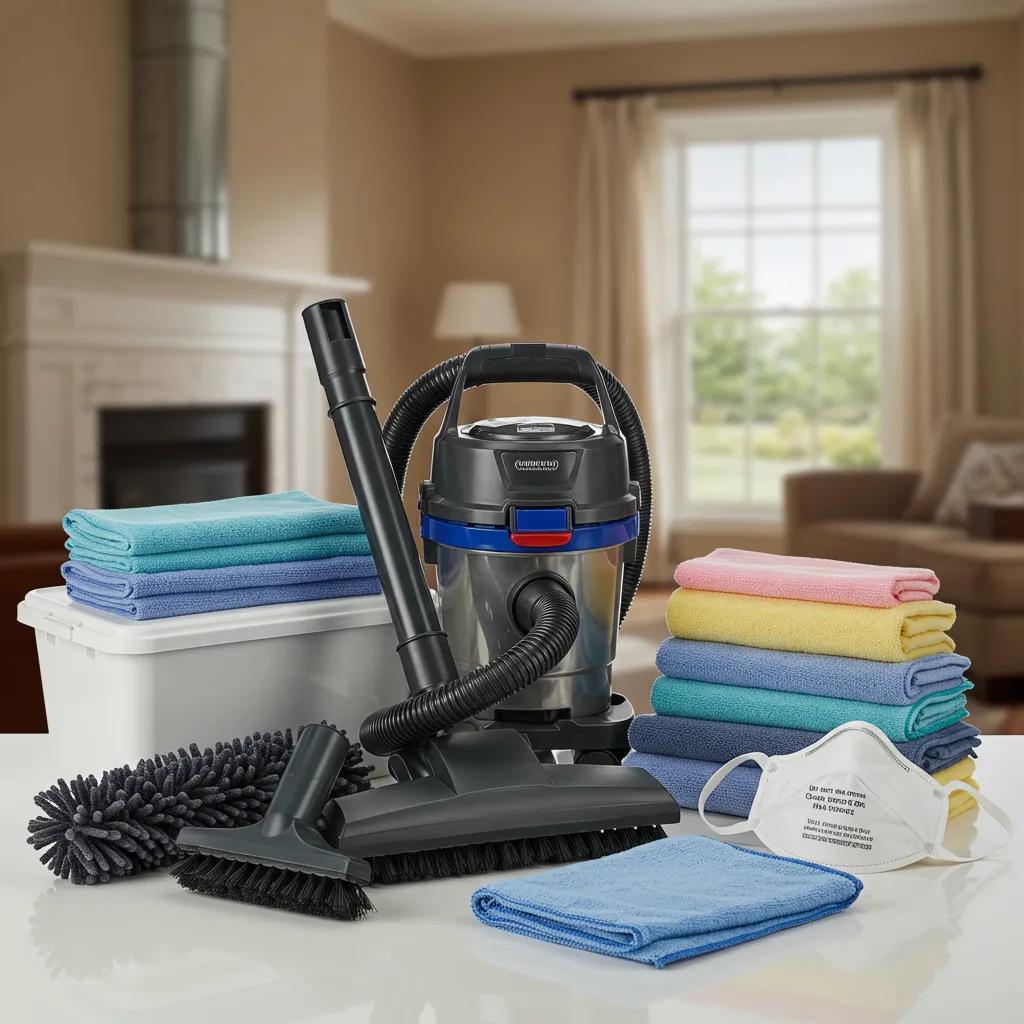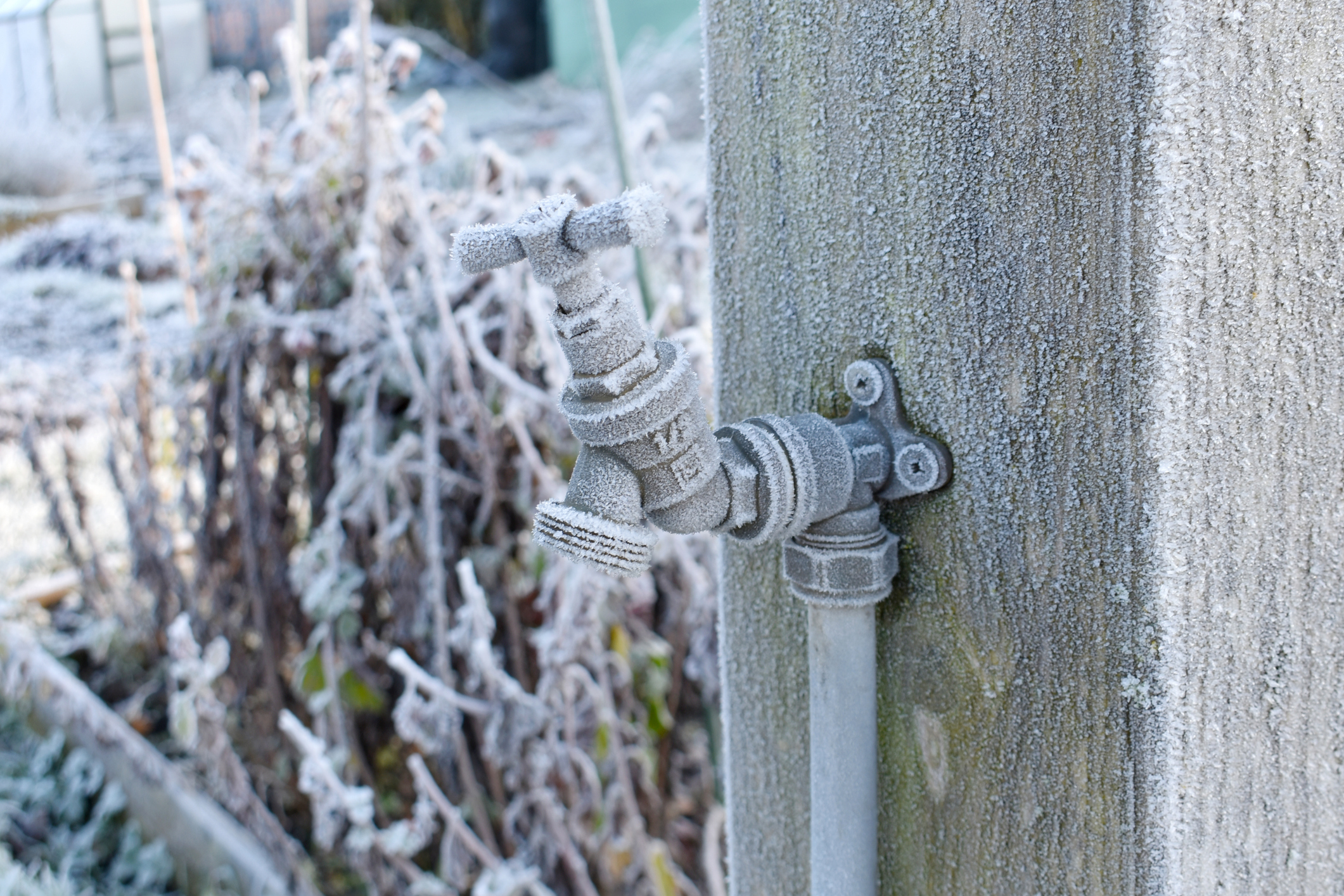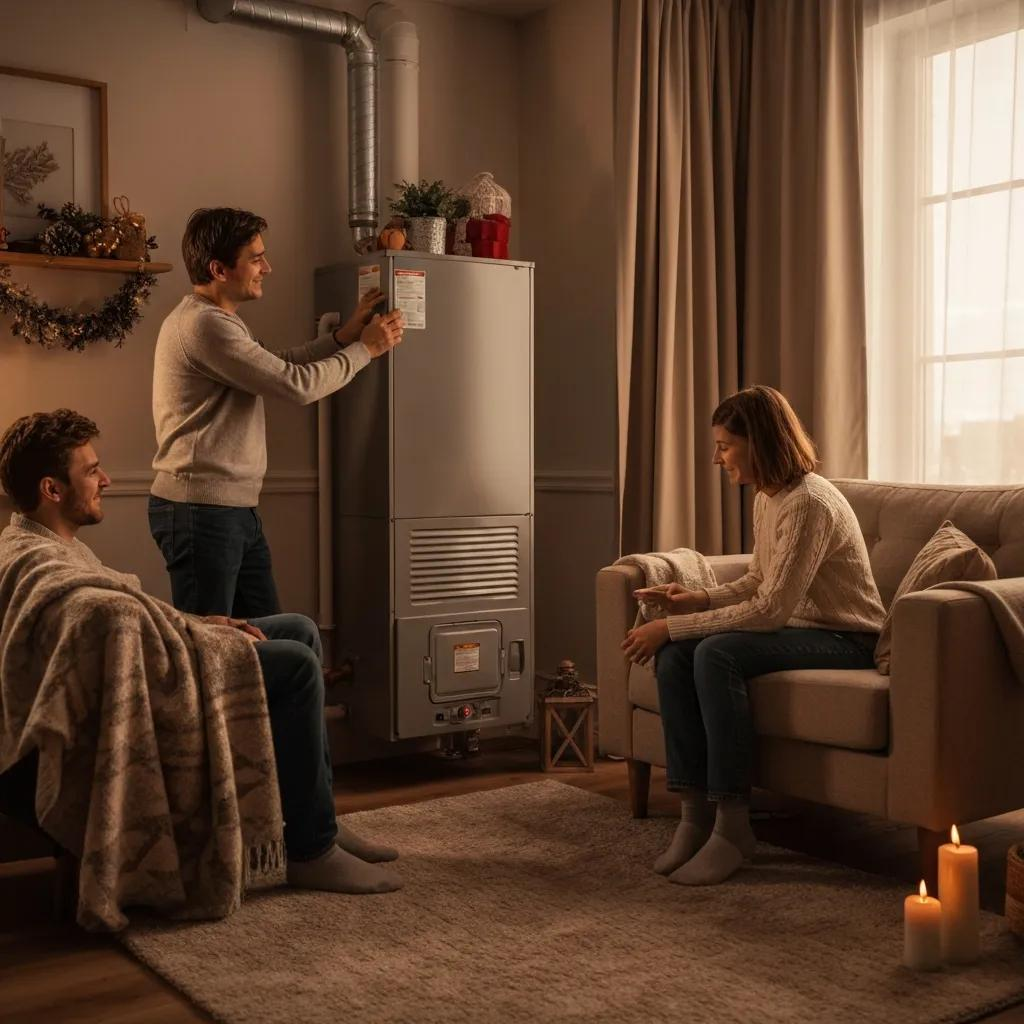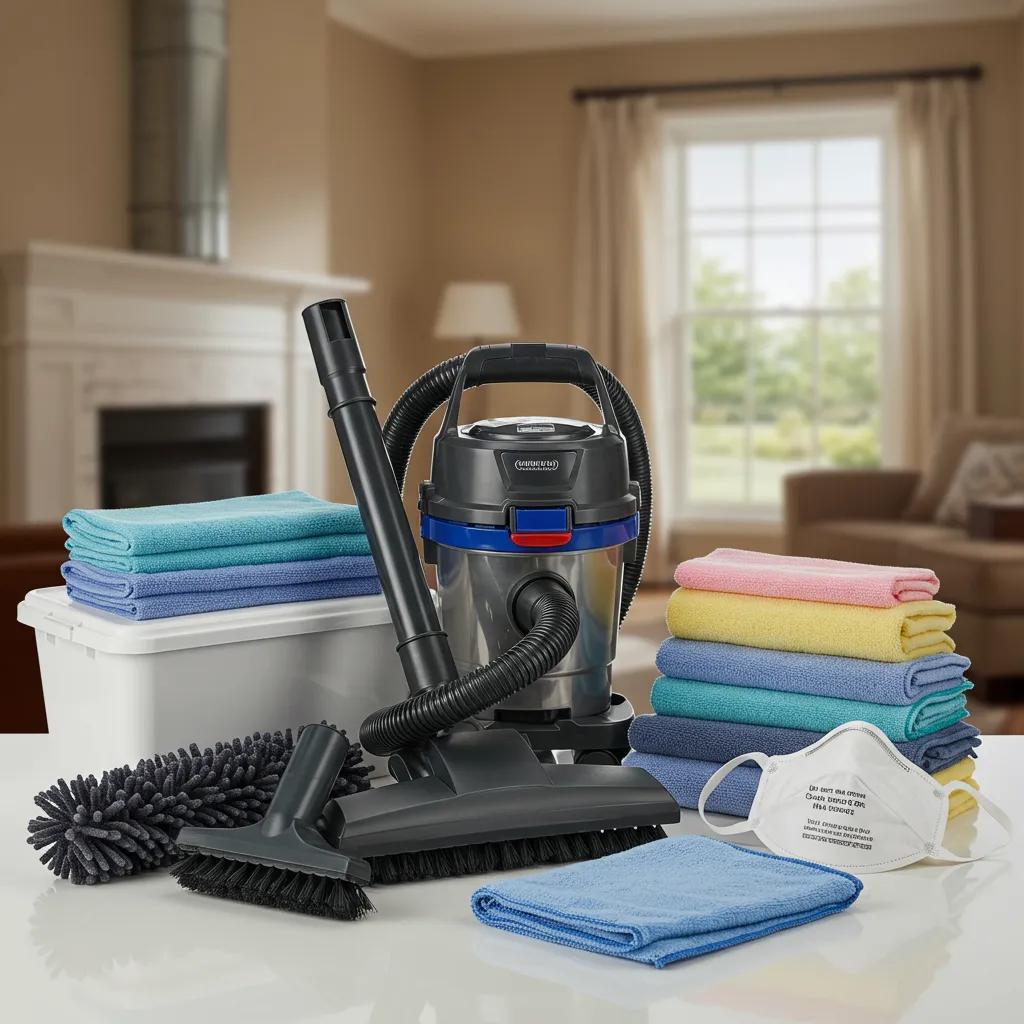Breathe Easy: HVAC Maintenance Tips for Clean Furnace Vents
Breathe Easier: Your Guide to Cleaning Furnace Vents for Better Air Quality
Cleaning your furnace vents is key to clearing out dust, pollen, and other airborne irritants, restoring healthy airflow and boosting your home’s air quality. This guide dives into what furnace vents are, why keeping them clean matters for your health and your HVAC system’s performance, and how both DIY efforts and professional services can make a real difference. Many homeowners notice more dust, stale smells, uneven temperatures, or allergy flare-ups before thinking about their vents. We’ll walk you through practical DIY steps, tell you when it’s time to call in the pros, and what to expect from a professional cleaning. You’ll learn how to spot contamination, which tools to use safely, the limits of home equipment, and how professionals tackle tough jobs like mold and deep-seated dirt. We’ll cover why vent cleaning is crucial, when to do it, the essential DIY tools and steps, how professional services operate, typical costs in Northern Utah, tips for upkeep between professional visits, and quick answers to your most common questions about furnace vents and indoor air quality.
Why Keeping Your Furnace Vents Clean Matters for Your Home or Business
Cleaning furnace vents clears out airborne contaminants and improves airflow by removing blockages that trap dust, pollen, and spores. This means less exposure for your family and a more efficient HVAC system. Simply put, cleaner vents allow your air filters and purification systems to do their job effectively, reduce the recirculation of particles, and prevent conditions that encourage mold growth. The direct benefits are fresher indoor air, fewer allergy triggers, and less stress on your system’s blower motor, potentially saving you money on energy bills and repairs. Understanding these advantages helps you decide how often to clean and whether you can handle it yourself or need an expert.
How Does Cleaning Furnace Vents Freshen Your Indoor Air?
Furnace vent cleaning targets settled dust, pet dander, pollen, and mold spores that gather in registers and near duct openings, reducing the source of particles that get recirculated into your living spaces. The cleaning process stirs up and removes this settled material before your system can re-aerosolize it every time the furnace kicks on. This significantly cuts down on exposure and can ease symptoms for allergy sufferers. Organizations like NADCA and the EPA highlight that targeted cleaning, combined with good filtration and humidity control, leads to healthier indoor environments. Regular cleaning, along with better filters and air quality devices, helps maintain lower particle counts and fewer stale odors indoors.
The table below offers a quick look at common contaminants and their impact on your home’s air quality and your well-being.
This table illustrates how specific cleaning actions directly tackle contaminants and measurably improve your indoor air quality.
What Are the Perks of Regular HVAC Vent Cleaning?
Regular HVAC vent cleaning brings health, operational, and comfort benefits by clearing out particle buildup, improving airflow, and eliminating odors from trapped debris. Health-wise, you’ll experience less allergen and mold exposure, supporting better respiratory health. Operationally, less resistance in the vents means your blower motor works less, and you’ll likely enjoy more consistent temperatures throughout your home, boosting comfort. Regular cleaning is also a smart part of preventative home maintenance, helping you avoid costly emergency repairs and keeping your indoor air fresh over time.
Key benefits you can look forward to:
- Healthier Living: Reduced exposure to allergens and mold, promoting easier breathing.
- System Efficiency: Less airflow resistance helps your furnace run more economically.
- Enhanced Comfort: More even temperatures room-to-room and fewer lingering odors.
These advantages make vent cleaning a practical step in home care and naturally lead to knowing when a professional check-up is a good idea for your system’s health and your family’s well-being.
How Does Cleaning Extend Your Furnace’s Life and Efficiency?
Cleaning your vents reduces airflow resistance and prevents particle buildup that forces your blower motor and heat exchanger to work harder, leading to premature wear. Less strain on components and fewer clogged filters mean lower operating temperatures and a reduced chance of breakdowns, supporting longer equipment life and consistent efficiency. By reducing static pressure and improving airflow, you can see a modest decrease in energy consumption, especially with older or smaller systems. Regular cleaning ensures predictable performance, and when combined with scheduled maintenance, it significantly boosts your system’s long-term reliability.
This connection between cleanliness and component stress is why maintenance plans that include duct and vent care often lead to fewer emergency calls and sustained energy performance throughout the system’s lifespan.
When to Clean Your Furnace Vents: Spotting the Signs and Finding the Right Schedule
Cleaning your furnace vents should be guided by what you see and how you use your home. Proactive checks can catch issues before they impact your health or system performance. The best way to schedule is based on risk: if you have high dust levels, pets, or family members with allergies, you’ll need more frequent attention because contamination builds up faster. A standard service interval for many homes is every few years, adjusted based on visible signs and local conditions. Understanding both the clear indicators and these influencing factors will help you plan your cleaning and decide between a DIY approach or professional service.
What Are the Common Signs Your Furnace Vents Need Cleaning?
You’ll know your furnace vents need cleaning when you see visible dust and debris around the registers, notice reduced airflow compared to normal, detect persistent musty odors when the system runs, or experience a sudden increase in allergy or respiratory symptoms. A quick look at your return grilles and supply registers often reveals surface dust or dark streaks, hinting at deeper buildup inside the ducts. Performance issues like longer heating cycles or uneven temperatures across rooms can also signal airflow obstructions. Regularly checking your vents and noting any changes helps you determine if a simple register clean is enough or if a professional duct cleaning is in order.
How Often Should Furnace Vents and Ducts Get Professional Cleaning?
For most homes, a professional cleaning every three to five years is a good guideline. This interval should be adjusted based on factors like having pets, occupants with allergies, smoking in the home, or recent renovations that stir up construction dust. These conditions accelerate particle buildup and can embed contaminants deeper into the ductwork, making professional extraction far more effective than DIY methods. In Northern Utah, seasonal dust and indoor humidity can influence timing; homes with heavier seasonal dust might benefit from more frequent checks. Use the three-to-five-year range as a starting point and shorten the interval if you notice signs of buildup or if occupants are particularly sensitive.
Factors that suggest more frequent cleaning:
- Pets and dander: These speed up dust accumulation and require more frequent cleaning.
- Allergy sufferers: Benefit from shorter intervals and specialized sanitization.
- Renovations or smokers: Often necessitate immediate professional cleaning after the activity.
These considerations help you tailor your cleaning schedule to your specific home environment and risk factors.
Are There Special Steps for Homes with Pets or Allergies?
Homes with pets or occupants sensitive to allergens should use higher-efficiency filters, clean registers more often, and consider professional sanitization to remove embedded dander and hair from duct surfaces. Pet dander is tiny, sticks to surfaces, and is easily kicked back into the airflow without thorough removal. Upgrading to filters with higher MERV ratings or HEPA-compatible options and changing them more frequently can reduce particle loads and extend the time between deep cleans. Professional services can apply specialized cleaning and sanitization treatments for allergens, offering better results than basic DIY register maintenance.
These targeted actions reduce allergen reservoirs and help ensure your HVAC system isn’t a major contributor to indoor allergen exposure.
Essential Tools and Steps for DIY Furnace Vent Cleaning

DIY furnace vent cleaning involves using safe, effective basic tools and following a clear process to remove surface debris without causing damage or risking injury. The key to DIY success is preparation: isolate the work area, turn off your HVAC system, and wear appropriate personal protective equipment (PPE) to avoid stirring up dust. Homeowners can achieve noticeable improvements at registers and accessible duct openings. However, the limitations of standard vacuums and the lack of specialized agitation tools mean that deep contamination often requires professional attention. Clear steps and the right tools make DIY register cleaning an efficient and safe option for routine upkeep.
What Tools Do You Need for Safe and Effective Furnace Vent Cleaning?
You’ll need essential tools like a screwdriver or drill for removing register covers, a vacuum with a brush attachment (ideally HEPA-rated), microfiber cloths for wiping, a putty knife or soft brush for loosening debris, and protective gear such as N95 masks and gloves. Each tool serves a purpose: registers are removed with a screwdriver, vacuum attachments capture loose dust, and microfiber cloths minimize dust re-suspension during wiping. Consumer vacuums are helpful at the register level but don’t offer the powerful extraction of professional systems, making them best for surface maintenance rather than deep duct cleaning. Proper PPE is crucial to prevent inhaling stirred-up particles.
These basic tools allow you to manage visible buildup and maintain your vents between professional cleanings, while also understanding their limitations.
Here’s a quick look at common tools, their uses, and when it might be better to call a professional for deeper cleaning.
What Are the Step-by-Step Instructions for Cleaning Your Furnace Vents?
A safe DIY process begins with turning off your furnace and thermostat. Then, remove the register covers, vacuum out visible debris using a brush attachment, and wipe down the register and surrounding grille with a damp microfiber cloth. Next, inspect the immediate duct opening for signs of heavy buildup or mold. If you find any, stop and consider professional help. Reinstall the registers once they are dry and clear, and remember to check or replace your air filter to prevent immediate recontamination. This process typically takes about 30–60 minutes for a standard home and is effective for surface-level maintenance and improving short-term airflow.
Following these steps regularly keeps your registers clean and slows down particle re-entry until you can schedule a professional deep clean.
When Is DIY Cleaning Not Enough, and You Need Professional Help?
DIY cleaning falls short when you see signs of mold, significant contamination deep within ducts, inaccessible main trunk lines, or persistent odors after surface cleaning. This is because household tools can’t match the agitation, negative-pressure extraction, or sanitization capabilities of professional equipment. Professionals use high-powered vacuums, rotary agitation systems, and HEPA containment to remove embedded material and safely treat microbial growth. Health and safety concerns, such as recurring mold or occupants with severe respiratory issues, absolutely warrant professional attention to avoid exposure risks. In these situations, it’s best to book a professional service for a thorough assessment.
For those interested in ongoing care and bundled services, our Furnace Services can be a great option; these programs ensure regular inspections and professional cleaning when deeper work is needed.
How Professional Furnace Vent Cleaning Services Work
Professional furnace vent cleaning services follow a systematic approach—inspection, agitation, extraction, sanitization, and verification—to safely remove contaminants and restore airflow, using specialized tools and proven methods. The core principle is containment and negative pressure to prevent recontamination while dislodged material is captured by HEPA filtration. Professionals also assess system components, identify necessary repairs, and provide documentation of their findings and results, helping homeowners and building managers plan future maintenance. Understanding this detailed process highlights the significant value a trained team brings compared to DIY efforts.
What Does a Complete Professional Furnace Vent Cleaning Involve?
A comprehensive professional cleaning starts with a thorough inspection and scoping of your duct system. This is followed by mechanical agitation, using tools like rotary brushes or air sweeps, to loosen debris. Then, high-efficiency vacuum extraction removes the loosened material. Technicians will sanitize affected areas if mold or microbial concerns are present and conduct a post-cleaning inspection to confirm contaminant removal and note any needed repairs. You can expect a systematic process that documents before-and-after conditions and recommends filter upgrades or further actions. This level of service tackles deep contamination and ensures that airborne reservoirs have been effectively treated.
Describing these steps helps homeowners clearly see the difference between surface-level DIY results and the comprehensive outcomes of professional cleaning.
How Do Certified Technicians Remove Dust, Mold, and Allergens?
Certified technicians employ rotary brushes, pneumatic agitation, negative air machines, and HEPA-filtered vacuums to physically dislodge and capture particulates from duct surfaces, all while maintaining containment to prevent cross-contamination. For mold issues, technicians adhere to strict safety protocols to isolate affected areas, apply appropriate sanitizing agents where needed, and verify spore count reduction through visual checks or testing if necessary. These methods are far more effective at reducing airborne allergen reservoirs than consumer-grade tools and often align with NADCA’s best practices for HVAC cleaning. Using certified methods increases the likelihood of thorough removal and helps prevent recurrence when paired with improved filtration.
This operational overview underscores why professionals are essential when contamination goes beyond simple surface dust and when occupant health is a primary concern.
What Factors Affect the Price of Furnace Vent Cleaning Services?
Several key factors influence the price: the number of vents and total duct length, the accessibility of registers and trunk lines, the severity and type of contamination (mold requires extra steps), and any necessary repairs or sanitization performed during the job. Projects with tight access or long, obstructed ducts take more time and require specialized equipment, increasing the cost. The presence of biological growth or smoke residue typically adds remediation steps and safety protocols, further raising the price. Understanding these cost drivers allows homeowners to create a clear checklist to communicate their needs to providers and get accurate estimates.
Service FactorWhy It MattersTypical Impact on PriceNumber of ventsMore registers mean more labor and timeModerate to significant increaseAccessibilityDifficult access requires specialized tools and effortSignificant increaseContamination levelMold or heavy debris needs specialized remediationSignificant increaseAdditional repairsSealing leaks or replacing damaged partsVariable, usually adds cost
How Does Bundling Cleaning with HVAC Maintenance Plans Save You Money?
Bundling vent cleaning with an HVAC Maintenance Plan lowers long-term costs by establishing regular service intervals, which prevent major contaminant buildup and reduce the likelihood of expensive emergency repairs. The value lies in prevention: consistent inspections and minor interventions catch small issues before they become big problems, and bundling often comes with cost savings compared to standalone services. For property managers and homeowners who prefer predictable service, bundled plans simplify scheduling and can spread costs while ensuring optimal system performance. Over time, bundled maintenance typically reduces the overall lifecycle costs of HVAC equipment.
Advantages of bundling include:
- Proactive Scheduling: Reduces the risk of urgent, costly repairs.
- Consistent Pricing: Predictable invoices and fewer unexpected expenses.
- Complete Care: Coordinated maintenance for filters, vents, and mechanical parts ensures system longevity.
These savings make bundled arrangements highly attractive for properties aiming for consistent indoor air quality and reliable equipment.
Where Can You Find Trusted Local Furnace Cleaning Services in Brigham City, Ogden, and Logan?
To find reliable local services, check providers based on local reviews, their visible presence in your service area, clear scope of work documents, and their willingness to provide references or before-and-after photos. These indicators point to local expertise and accountability. Look for providers who clearly explain their process, reference industry standards like NADCA practices, and offer post-service reports so you can verify the results. For residents and managers in Brigham City and surrounding Northern Utah areas, Your Comfort HVAC is a local provider offering Furnace Services, Professional Furnace Vent Cleaning, and an HVAC Maintenance Plan, serving Northern Utah including Ogden and Logan. Checking a provider’s local business profile and online reviews adds an extra layer of trust when scheduling.
When selecting a local contractor, comparing service scopes and requesting written estimates ensures you choose a provider that meets your service expectations.
Maintaining Clean Furnace Vents Between Professional Services
Keeping your furnace vents clean between professional services involves routine tasks that prevent rapid contaminant buildup and extend the time between deep cleanings. The strategy is ongoing control: frequent filter changes, quick register dusting, and managing airflow limit the amount of particulate that reaches your ducts. Complementary indoor air quality products like upgraded filters, portable air purifiers, and humidity control systems reduce deposit rates and promote healthier indoor environments. These homeowner-level practices lessen the burden on professional services and help preserve the benefits achieved after a thorough cleaning.
What Regular Maintenance Can Homeowners Safely Do?
Homeowners can safely replace air filters at the recommended intervals, vacuum and wipe down register covers, ensure vents aren’t blocked by furniture, and keep return grilles clean by vacuuming them with a brush attachment. Regular vacuuming and general dust control in your living areas reduce the amount of dust drawn into your HVAC intake, lowering deposition rates in the ducts. Using higher-MERV filters where compatible and checking register seals can reduce air leakage and particulate entry. These simple tasks minimize cumulative contamination and make professional cleanings more effective when they are scheduled.
Following a short checklist of routine tasks keeps your vents functioning well and reduces the need for frequent professional interventions.
When Should You Book Your Next Professional Cleaning?
Schedule your next professional cleaning based on observed signs, your baseline frequency, and your household’s specific risk factors. Use the three-to-five-year guideline but shorten the interval if you have pets, allergies, have undergone recent renovations, or see visible signs of contamination. The final step in planning is to set a calendar reminder, perhaps tied to seasonal changes in your area, and consider pairing the cleaning with filter replacement or thermostat service for maximum efficiency. Enrolling in a maintenance plan ensures regular scheduling and can trigger proactive checks that identify issues before they become major problems. For residents in Northern Utah, factoring in local seasonal dust and indoor humidity trends when scheduling can help time services for the greatest impact.
Using these guidelines helps maintain a predictable maintenance schedule and preserves both your air quality and your system’s performance.
Conclusion
Regularly cleaning your furnace vents significantly improves indoor air quality by reducing allergens and enhancing airflow, ultimately fostering a healthier living environment. Understanding the importance of this maintenance not only helps prevent costly repairs but also ensures your HVAC system operates at peak efficiency. For the best results, consider scheduling a professional cleaning to tackle deeper contamination and achieve lasting benefits. Explore our services today to keep your home clean and comfortable!
Customer Testimonials
Read what our satisfied customers have to say about our reliable HVAC services and expert solutions for home comfort and efficiency.







Great Financing Options
We’ve partnered with trusted lenders to offer flexible financing solutions that fit your budget. Whether you’re looking to start a new project or upgrade your home, we make it easy and affordable.Explore your options today and take the next step with confidence.
Blogs


Get Your Furnace Ready for Winter: A Practical Checklist and Tune‑Up Guide for Northern Utah









